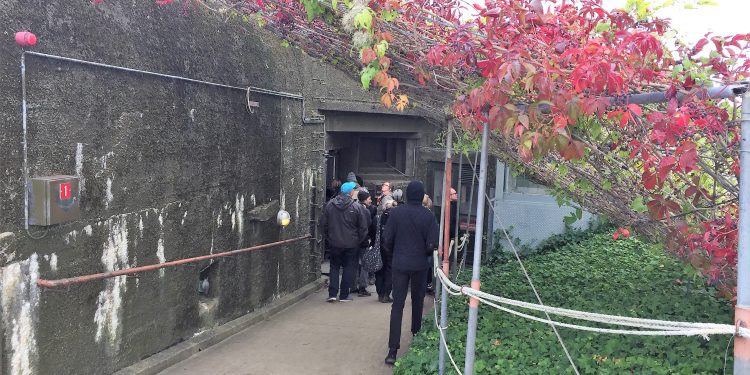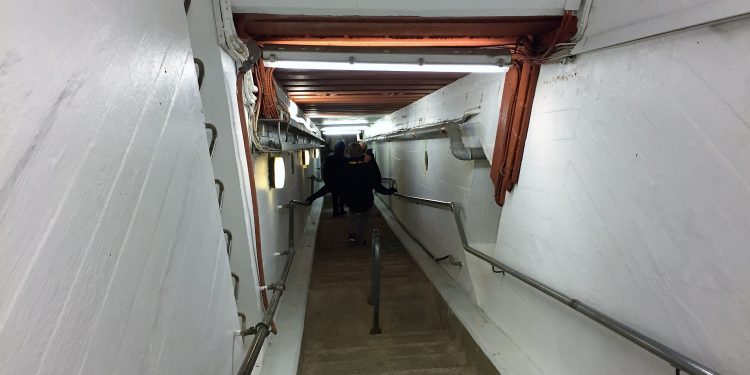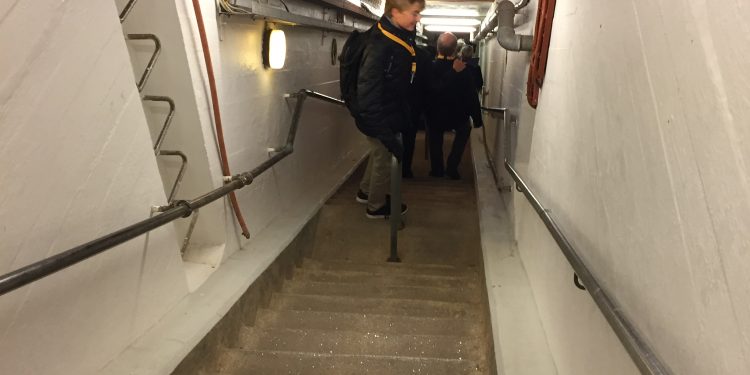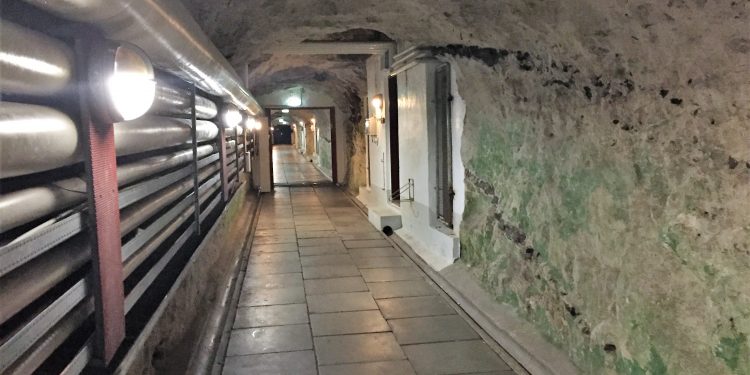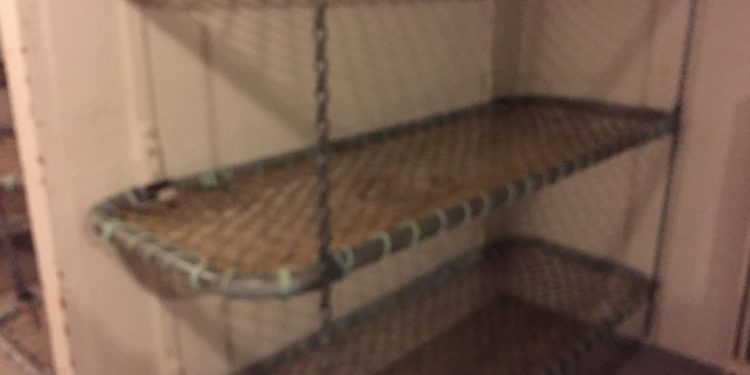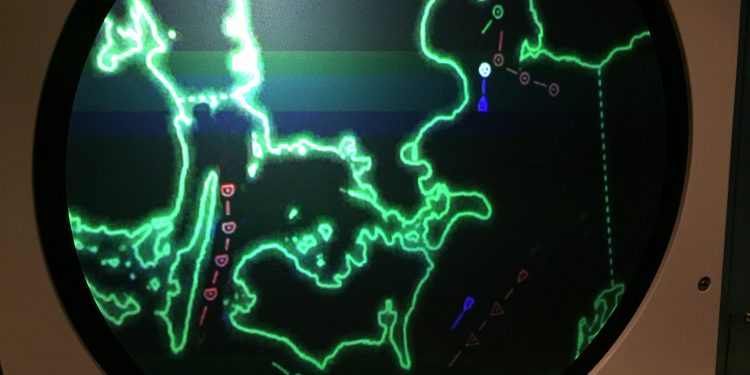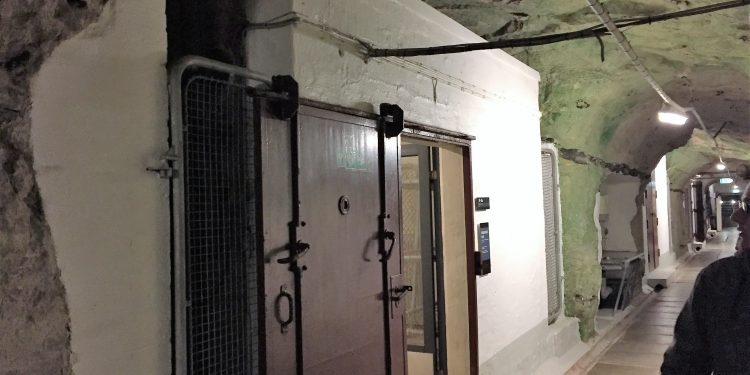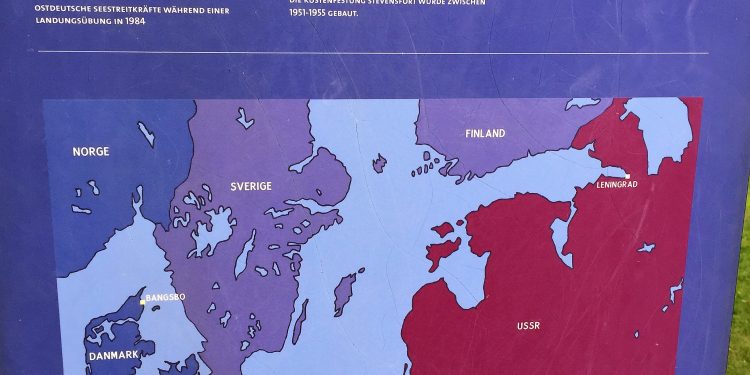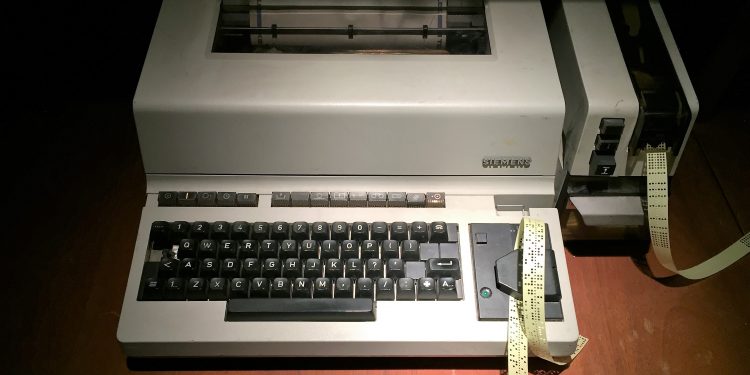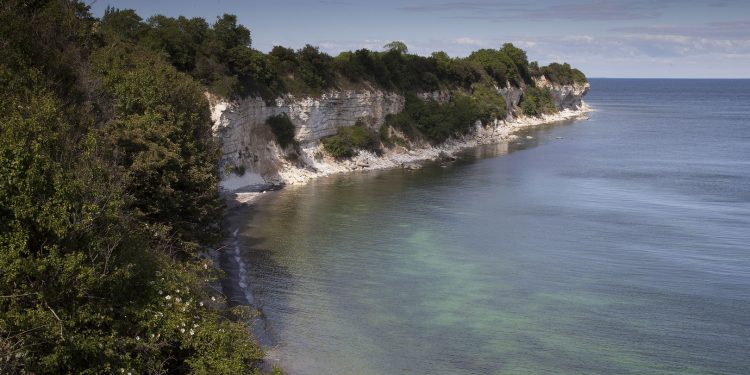A unique piece of Cold War history: the Danish military bunker and nuclear attack-proof fortress
Deep down in the limestone cliffs of Stevns a secret fortress lies buried. The only access is a vast amount of stairs which lead you to the tunnels down below.
The article continues below.
By Bente D. Knudsen Pictures: Niels Henrik Lindegaard, VisitDenmark Kim Wyong( picture from the sea)
If you are interested in history, a visit to the unique military bunker and nuclear attack-proof fortress is a must.
It reminds us of the 24-hour military surveillance of the Danish air and sea traffic made by NATO of the Soviet Union and the Warsaw pact members during the Cold War.
Located 20 meter below ground level, with more than 1.9 km of tunnels and operating rooms, it is a fascinating relic from the days of the Cold War.
More than 40 years at the front-line, with its strategic location at the exit of the Baltic Sea, only 90 km from East Germany, it was the most important listening post in the Baltic.
With guides, who are former fortress employees, full of spy tales; you are in for an eventful day.
Members of the staff at Stevns Fortet remember the 1 July 1991 vividly. On this day, the eight members of the Warsaw pact decided to disband it and only a few months later the Soviet Union collapsed.
This led to the official ending of the Cold War efforts in Denmark and the most important NATO listening post in the Baltic Sea, Stevns fortet, reduced staff and ultimately closed in 2000.
Since then it has reopened as a unique museum enabling visitors a glance into military surveillance life during the Cold War.
Sadly, with recent developments more than 30 years after the end of the Cold War, Danish military is again looking for personnel with Russian language skills and nuclear competences.
“The renewed focus (Editor’s note: since 2015) on knowledge about Russia and its nuclear weapons is simply about trying to recreate some of the capacity, which was disbanded when it was believed that Russia was no longer a threat to Denmark. As early as 1993, it was decided that Russia should no longer be considered a military threat to Denmark,” Flemming Spidsboel Hansen said to Jyllands Posten in 2016.
He is a Senior Researcher at DIIS specialising in Russia, the Ukraine and he writes, speaks and tweets about new (disruptive) technologies and things post-Soviet.
Since February 2022, the old cold war fortress suddenly becomes more real than ever before.
The article continues below.
Starting in 1991, Danish military expenditure was drastically reduced; from 2.1 percent of the gross national product to an all time low of 1.15 percent in 2016.
Since then it has been increased with higher budgets for the Danish Defence and Denmark is expected to raise expenditure to 1.5 in 2023.
With the new war waged by Russia on Ukraine on 24 February 2022, the Danish Government is working on increasing the budget to reach the required 2.0 percent as quickly as possible.
During the Cold War, Denmark established the strongest defence ever seen in the country with lots of resources put into the construction of defence positions and air-raid shelters for civilians, as well as training of the armed forces.
The end of the Cold War made Denmark change its focus from defending its territory – of which the Stevns Fort was part, and instead focus more on international missions.
Since the war in Ukraine the focus has changed and the Danish military budget has been increaded by billions of DKK to enable it to meet the new security situation.
At present Denmark spends approx. DKK 33 billion on the defence, anew budget has been approved which will gradually increase the yearly spending to reach a total of DKK 52 billion in 2033.
The article continues below.
Since 2016, up to 4,000 NATO soldiers have been stationed in the three Baltic States and Poland, Denmark is contributing with 200 soldiers. In the current escalated crisis, Denmark will contribute with 2 F16 Fighter jets as well.
It seems highly unlikely that Stevns Fortet will be reopened for military service (it was in 2012 given status as a protected heritage site).
A visit does give a great insight into the technology available at the time and the immense technological developments since then.
The article continues below.
Location:
Koldkrigsmuseum Stevnsfort
Korsnæbsvej 60
4673 Rødvig
The museum is open every weekend from 10:00 to 17:00 and until 30 September on weekdays from 10:00 to 15:00. The underground part of the fortress is only possible to visit on a guided tour.
The last guided tour starts at 15:00. You can buy tickets online before arriving. The guided tour is in Danish with audio guides in English and German available in limited numbers.
More information 5650 2806 or write to stevnsfort@oesm.dk or find information at their online site here .
How to get there:
By train: Take the S-line E from Copenhagen Central Station to Køge and change to the local train 210 to Rødvig. From Rødvig you can walk along the limestone cliff and its magnificent landscape to the museum. Distance is about three km.
By car from Copenhagen: Take the high way E47 towards Rødby and E55. Take exit 33 and drive towards Køge – from here follow the road signs to Stevns Klint and St. Heddinge and then the signs to Koldkrigsmuseum Stevnsfort. Calculate about one hour driving.


